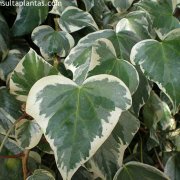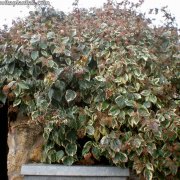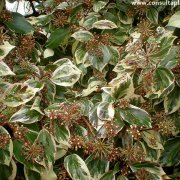Care of the climbing plant Hedera canariensis or Canarian ivy |
|
The genus Hedera, family Araliaceae, comprises 15 species of climbing plants native to Europe, North Africa, Japan, the Canary Islands and central Asia. Some species are: Hedera canariensis, Hedera helix, Hedera colchica, Hedera maroccana, Hedera algeriensis, Hedera nepalensis. Common name: Canarian ivy. This species is native to the Canary Islands. They are fast growing climbing shrubs with reddish stems. The leaves are larger than those of Hedera helix and are glossy, ovate-triangular and evergreen (with reddish petioles). The flowers are small, yellow-green and appear in umbels. They bloom from late summer to early fall. They produce black fruits in the form of berries. Canarian ivy is used to cover walls, fences and pergolas or as indoor plants in large pots and planters; It's also interesting in hanging pots when young. Hedera canariensis can grow in full sun, semi-shade or shade exposures; variegated plants need several hours of sun daily. It resists occasional and light frosts. Canarian ivy prefers a slightly alkaline and well-drained soil; use a garden substrate mixture with a little lime and 1/3 sand. Transplant every 2-3 years in spring. Water regularly (never water) so that the substrate does not dry out completely. In winter, wait for the substrate surface to dry before watering. Spray the leaves in summer with lime-free water from time to time. Fertilize once a month during spring and summer with mineral fertilizer. Prune at any time of the year to control its growth; the most common is to do it at the end of winter. Hedera canariensis is a resistant plant but can be attacked by aphids if it suffers from drought. Canarian ivy propagates by cuttings in spring or summer; Root in water or sand. |
Images of the climbing plant Hedera canariensis or Canarian ivy |
Find plants
Hedera canariensis or Canarian ivy | Care and Growing
© 2026 FavThemes



